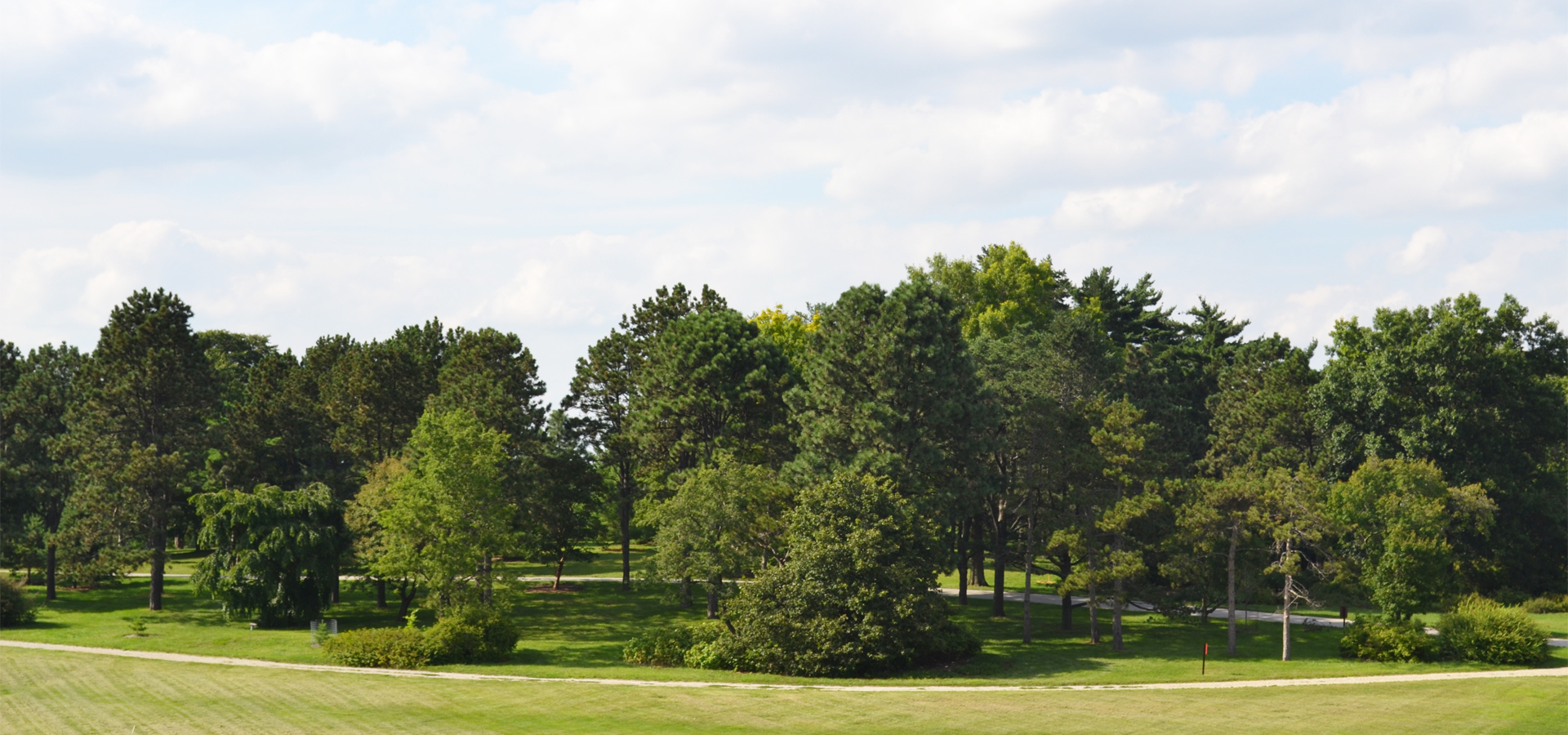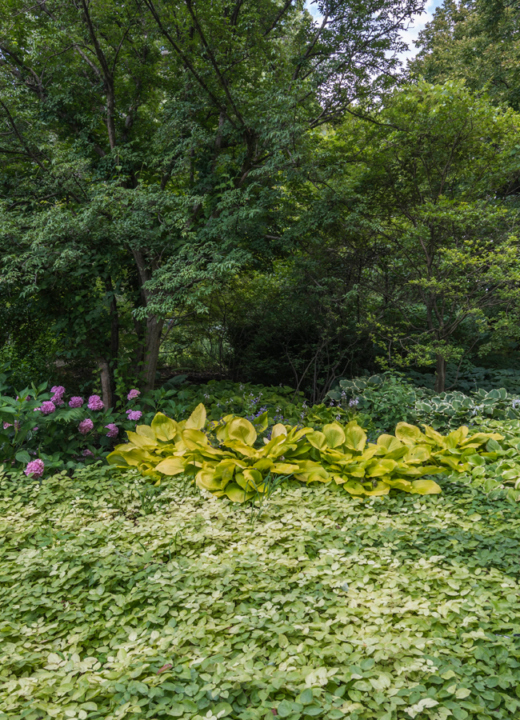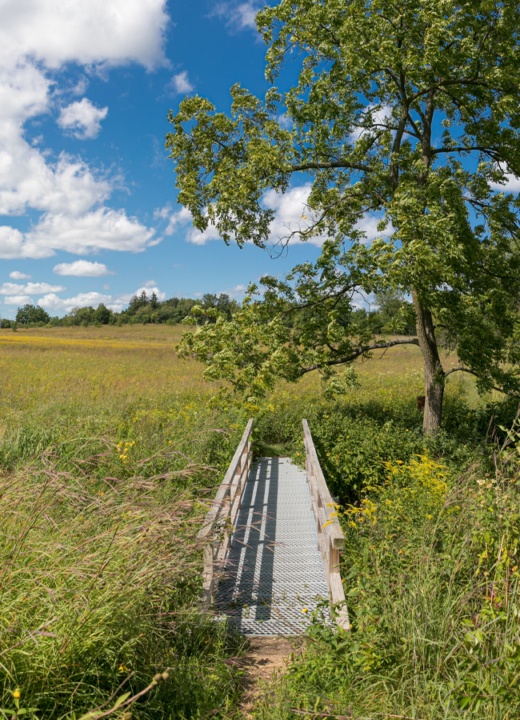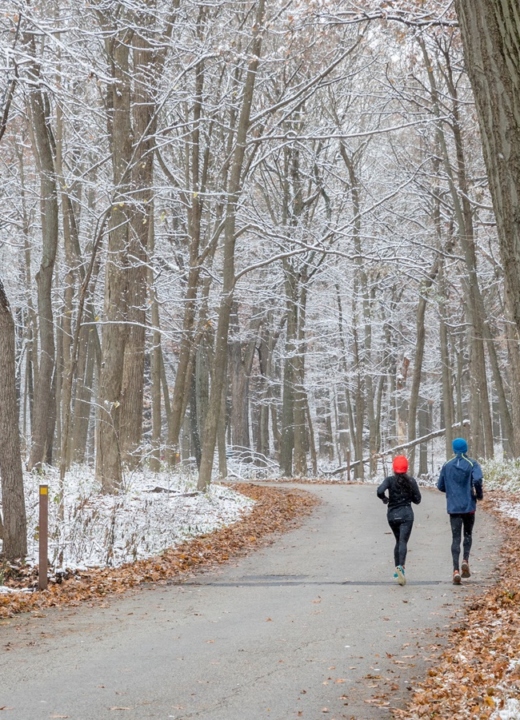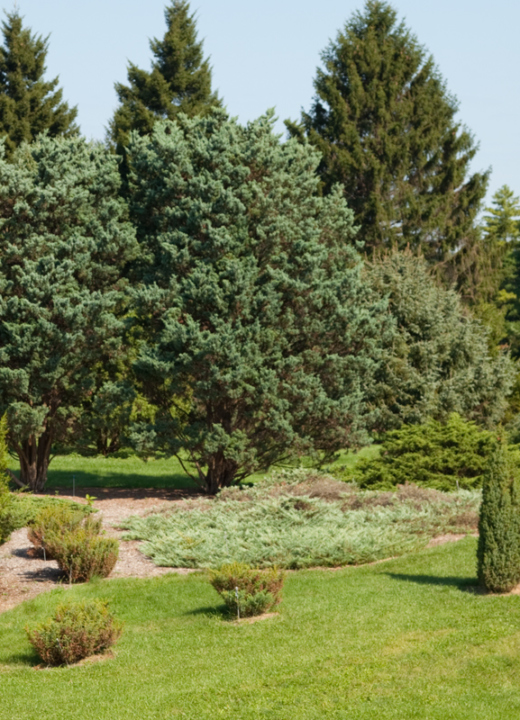Flowing between Frost Hill and Crabapple Lake, the Rose Family Collection includes many related plants that we know, enjoy, and use, all belonging to the rose family (Rosaceae).
They include not only colorful flowering shrubs, but many common fruits such as pears, cherries, peaches, plums, strawberries, blackberries, and apples.
Plants in the rose family have flowers with five petals that grow in a spiral around a yellow center. When the flowers are small they often grow in clusters, as in the spirea (Spirea japonica) you can see at the top of Frost Hill.
The main Rose Family Collection near Parking Lot 4 is surrounded by ornamental fruit trees, beloved for their spring bloom, that also are part of the family. Many of these trees also are represented in the Ornamental Flowering Trees Collection.
Cherry, plum, pear, and crabapple trees are glorious clouds of pink or white bloom in spring—but each individual flower, with its five petals, looks much like a wild rose.
The wild roses in the collection come from places as far as Turkestan and China. These species’ flowers are demure compared to the extravagant, many-petalled blooms often seen in cultivated rose bushes at garden centers. Garden roses have been developed through thousands of years of selection and hybridization.
In the Rose Family Collection, you’ll see many familiar garden shrubs, such as tough, drought-tolerant potentilla, often called cinquefoil; cotoneaster, popular for hedges; and flowering quince, which has vivid pink or orange spring blooms. Midwestern native plants are here, too: several species of serviceberry (Amelanchier); ninebark (Physocarpus), a large shrub that gets its name from its peeling bark; and chokeberry (Aronia), a shrub of wet woodlands. All are popular garden additions.
